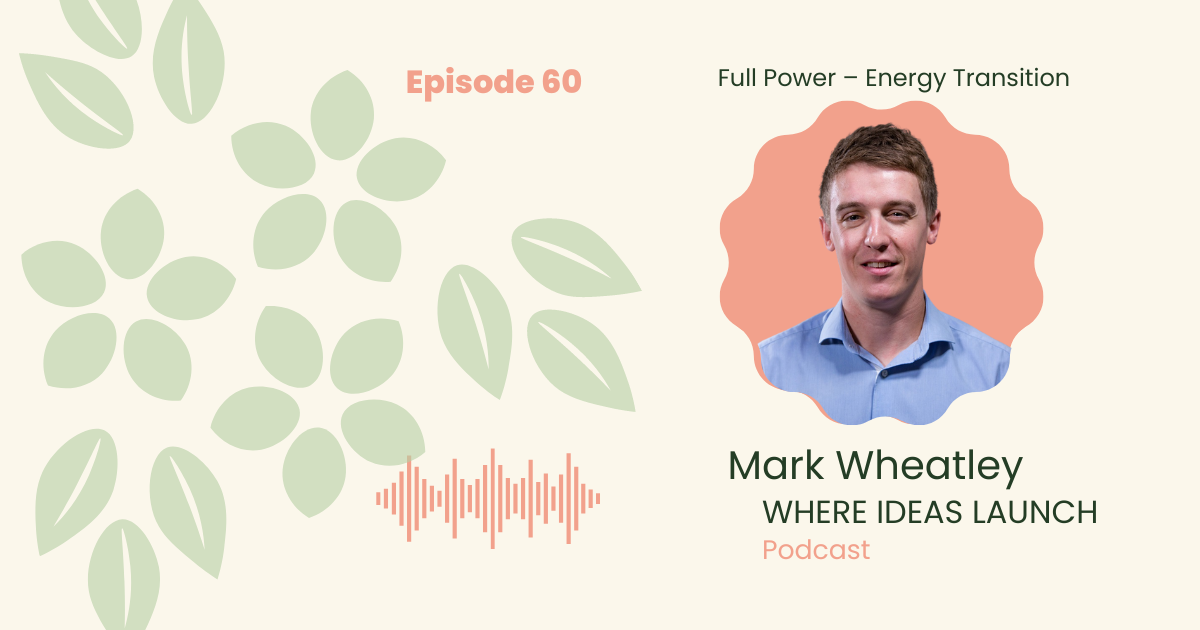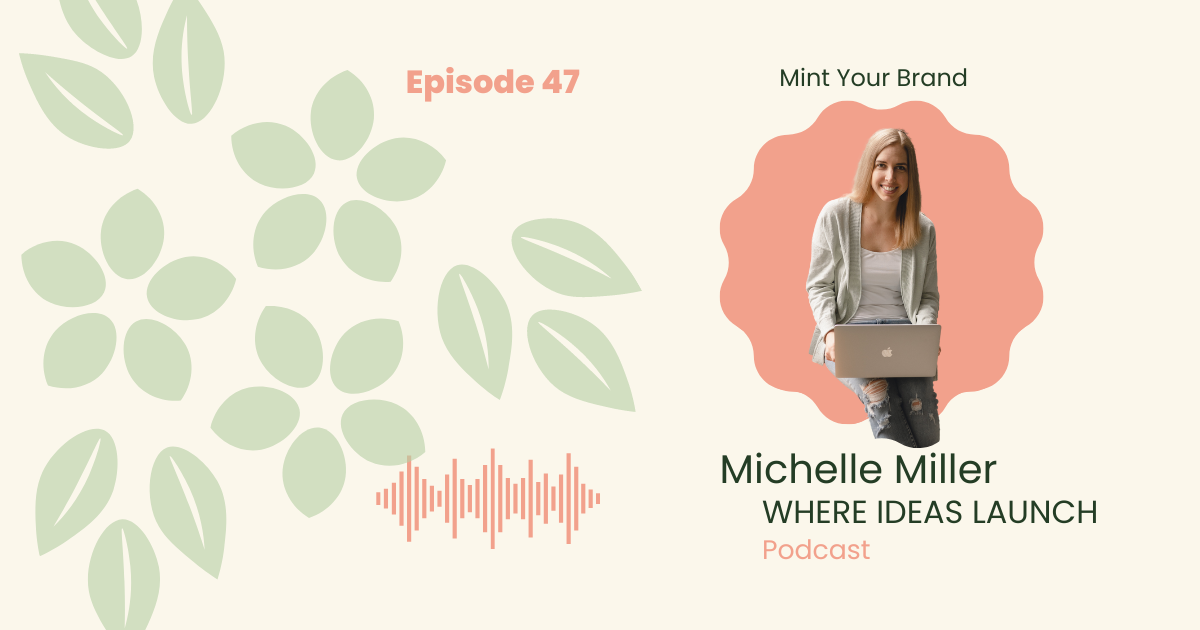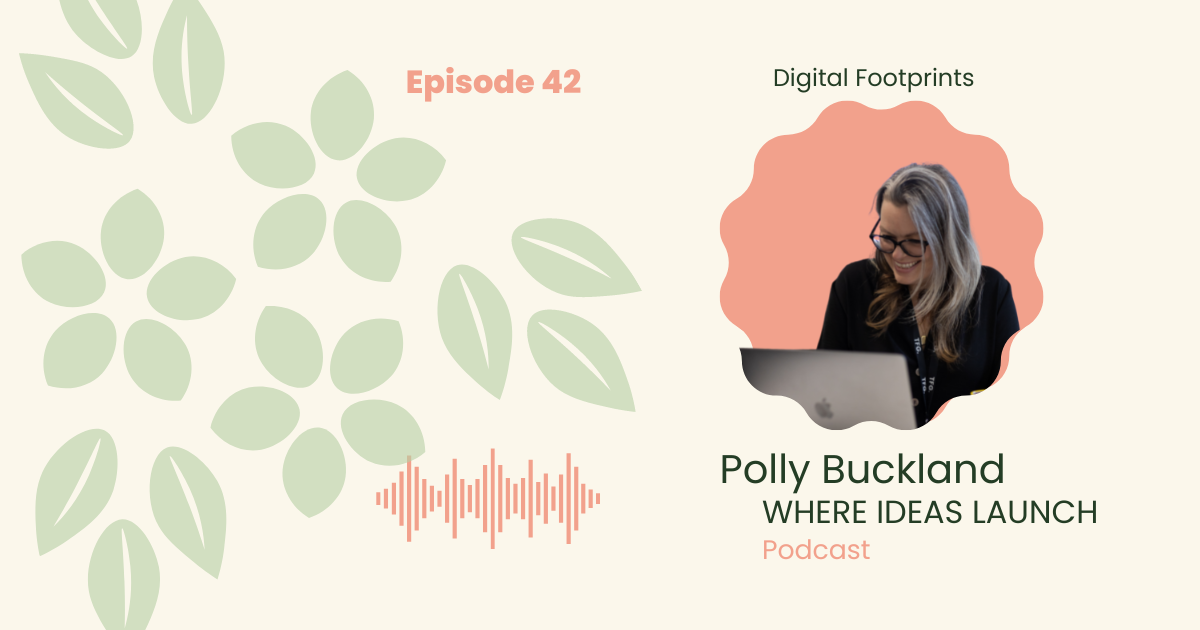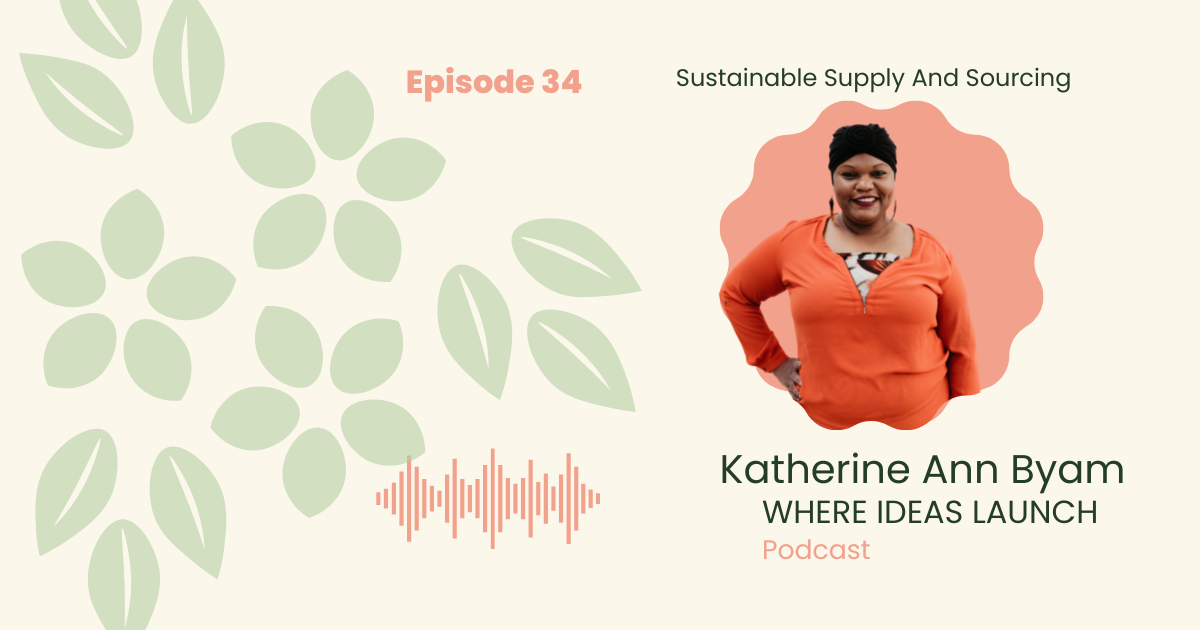060 Full Power - Energy Transition

About this Episode
Today, my guest is Mark Wheatley, head of channel sales, that full power utilities and energy consultancy
focused on helping SMEs reduce their energy costs, and begin their journey to net zero. Mark has been involved in the energy industry since 2014, and has led the development of full power future net zero service offerings.
Subscribe to Where Ideas Launch
Episode Transcript
Katherine Ann Byam 0:03
Mark, welcome to where it is lunch.
Marc Wheatley 1:05
Katherine, thank you very much for having me. Great to be here.
Katherine Ann Byam 1:07
Wonderful to have you is there seems to be an urgency building around net zero and actions to speed up or transition across the UK. What prompted this in your view.
Marc Wheatley 1:19
So I think there's a number of things in play here. And, you know, I talked to my friends and colleagues about this topic quite often. And I was referred to as the David Attenborough effect. So you know, there have been a number of documentaries, put outs, or mainstream media on, you know, on TV that we're all consuming now. And it's really sad to hit home to the general public, what we're doing to the planet, and the fact that we need to take action and do our bit to preserve our future, essentially.
So I think that, you know, these documentaries, bringing it to the fore, in general public is really having an impact. So first of all, I would say that, and by the way, if you haven't already checked out the documentary breaking boundaries, I certainly would watch it. It's, it's quite scary. In addition to those severe global weather events, of course, there's been a lot of them happening over the last couple of years. I've actually got a couple of friends that live out in Australia, and they were caught up in the huge wildfires that happened just over 18 months ago.
So I think that's really starting to hit home as well, bringing it into sort of my domain within the energy sector. I think the advent of or development of technology within the energy sector is actually making the ability for us to make a change a lot, lot easier. So to give you an idea, the cost of solar energy generation has fallen by about 75% in the last 10 years. And for wind generation, it's fallen by about 25%. So that sort of old conversation of renewable energy costs too much that's disappearing. So I think we no longer have that excuse in certain areas. So that's forcing change as well. And then, of course, the report that was recently put out by the IPCC, I think that really hit home for a lot of people as to how we're warming the planet, much faster than we realise. And action is absolutely needed.
Katherine Ann Byam 3:14
Yeah, absolutely. And I think these are really critical points. and wanted to kind of explore or what the UK government is doing to fuel the change for energy providers?
Marc Wheatley 3:25
Yes. So I mean, first of all, we'll probably start with the energy white paper that was published late last year. So that's the government's sort of plan. That's them setting out what they plan to do within the energy industry over the next couple of decades. And there's some big commitments in there that the government has put out. So first of all, you know, they've committed to creating over 200,000 jobs in what they've called a greener economy. So and that's over the next decade. So that's to do with areas such as power generation, so you know, how we produce the electricity that we consume.
And hydrogen technology is a big, big topic, which I'll come into in a bit more detail in just a minute. And things like green retrofits, so looking at the old buildings that we live in, and that we use for work and retrofitting them to make them more energy efficient. And so yeah, lots of stuff in the energy white paper, also to do with, you know, electrifying transports, so changing public transport moving away from the ice vehicles in internal combustion engine vehicles, as they're known to electric vehicles, we started to see that happen across the country.
But within all of this, the government also had to make sure that the cost of energy for consumers is kept as low as possible. So one of the things that they're focusing on is that they want to make it easier for consumers, be it commercial consumers or domestic consumers, to find the best deal available on the market and switch more effectively.
And within the industry, we've seen off j making plans for this. So they're looking at forcing policy and regulation onto suppliers to allow customers to switch energy supplies a lot quicker. And that's the government's attempt and options to try and get around this concern that a switch to a renewable energy product is going to cost more. So there's sort of plans outlined within the white paper around that as well. Big, big plans into all commitments with regard to electricity generation. So the UK Government has committed that by 2050, electricity generation will be emission free. Now, that's a big, big task.
Now, as you mentioned, at the beginning, I've been in the industry since 2014. And I remember when I first entered into the energy game, I was helping small business owners with their energy procurements. And I would say, most probably about 80-90% of the products that were being quoted by the energy suppliers were what I termed brown energy. So this is energy products from fossil fuels. And occasionally, back then, you know, a few years back, I'd be asked by a prospect or a client, you know, can we take a look at renewable products, you know, what's the price differential there, and there was a big price difference, you know, if you wanted a green or renewable energy products, you were paying a premium and quite a substantial one. Now, that has changed completely. So most of the energy suppliers that we work with, they quote electricity products from a renewable source of standard, so we no longer have to ask for it.
And there is no price difference between a brand energy product as I called it and a green energy product. So there's been a big, big shift. And whilst that is a big commitment from the UK Government to be, you know, to have electricity completely emission free by 2050. It is possible, especially with the investment in solar and wind generation. And yeah, I mean, to add on to that might continue without really continued investment, offshore wind generation is a big, big thing and the government is to set aside a lot of money for that. Also investment in financing options for nuclear energy.
You know, there's discussions with EDF at the moment to develop new nuclear power plants, which would generate a lot of power for the UK population. So in addition to that, some suppliers have been reacting already to some of these commitments. So to give you an example, SSE, one of the UK's biggest energy suppliers, sold off its domestic energy arm a couple of years ago to focus on renewable products. So SSE as a company, they saw the writing on the wall, they knew that this policy was coming in. And they made a move pretty early, and they are investing a lot of their time and money into renewable products and projects. So yeah, we're already seeing big moves by some of the big energy suppliers. In the UK.
Katherine Ann Byam 7:56
I have two questions. One is around other sources. So I think there's still a lot of risk to people with nuclear and the management of nuclear plants, etc. and some of the other methods still create waste, right? So when we look into the whole scheme of things, curious about things like geothermal, and hydroelectric, like are these at all possible? Where we are?
Marc Wheatley 8:23
Yeah, so it's an interesting topic, actually. Because when I talk to clients, I talk to prospects and stakeholders, I talk about green energy and renewable energy, and I see them as two different things. Now, the definitions are open to opinions. So people have different opinions on what they mean, that a renewable product or nubile energy products or source is not necessarily great for the environment. So you could argue that hydro power is a very clean source of electricity. But in order to create it, you have to build, you have to flood happy habitats and so on across the world. And that seems quite detrimental to the natural world. So there are opinions on that. Within the UK, I'll be completely honest, I'm not too sure of the scope of hydropower projects, very much the UK Government is focused on offshore winds. That's where they see the future of electricity generation coming from?
Katherine Ann Byam 9:19
Yeah, no, it's interesting to see how all of this will shape up because I think that the biggest challenge that we face right now is that it's so complex, we've waited so long, that actually the decision making has become even more complex. It's not like we can go in small stages, we kind of have to rethink everything all at once. But when you want to rethink everything all at once you need everyone to be coordinated. And that doesn't necessarily work.
Marc Wheatley 9:43
Yeah, absolutely. I mean, the net zero time put in place by the UK government are very, very challenging. You know, 2050 seems a long way off. It's not really and the 2030 interim target is actually the crucial one. Is this. The next Nine, what, eight and a half years now, that really is the crucial time. And there needs to be huge, huge changes in the way that we consume and produce electricity and gas, of course, which is going to be phased out in certain areas in the coming years.
Katherine Ann Byam 10:15
Great. But tell me tell me a little bit about what full power is doing at the moment to help SMEs with better energy management because they think that, you know, this is something that where we've become more aware of we want to get our teeth into, but we don't necessarily know what's the best tap to take?
Marc Wheatley 10:32
Yeah, absolutely. Our focus is on the SME space in the UK. So full power has been going since 1997. That's when the UK energy market began deregulation. And we've been completely focused on the SME space, because we feel it's those business owners that need advice. They're the ones that are busy running their businesses, trying to, you know, they wear many hats, right? an SME owner is the marketing manager, finance manager, the HR manager, everything else, so we're there to hold their hand and help them through the maze.
That is the UK energy market. And whilst at the moment UK legislation around net zero is only really focused on larger companies. So for example, sccr, the streamline energy comm reporting, legislation only impacts the larger companies, we are starting to see and hear the impacts of that flowing down the food chain, and affecting SMEs. So to give you an example, we work with a company that produces chicken feed of all things. Now, their product is supplied into a supply chain. And the products work their way up through these large companies. So household names like test guys, and so on, and so on.
Now, those large companies are bound by legislation, and they're being told to report on their carbon emissions. And they're going as far as reporting on their scope three emissions, which then looks to their supply chain. So these SMEs now are being asked by their customers, what are you doing about your carbon emissions? What action Are you taking, and of course, unfortunately, most SMEs are not overly sure they're doing at this point and not taking action. And in fact, a recent report suggested that only one in 10 SMEs actually have a carbon reporting plan. So they're actually focusing on their emissions, and even 22% of SMEs don't even understand the meaning of net zero. So there's a huge amount of work to be done.
And what we're trying to do is to educate SMEs about net zero and what it means, how it impacts them, how it impacts their stakeholders, and to get them started on their journey. Because it's a completely overwhelming area. as a small business owner. As I said, You're wearing many, many hats, this is a new hurdle that's been thrown at you and you've got to educate yourself about what it means and how it impacts you. So we're there to try and demystify all of that and make it much more simple.
Okay, so as I said, SMEs can be affected by the net zero targets in many, many ways. So first of all, your customers as we've just touched on, maybe requiring you to take action. And if you're not going to take action, you may face the threat of losing customers. So that's immediately going to impact your bottom line and your revenue. So that and there's always this, there seems to be this assumption that to take action, and to reduce your carbon emissions, it's going to cost a business money, they're gonna have to invest to reduce their carbon emissions. Well, actually, if you don't take action, it's going to cost you a bit potentially in another way, you're going to lose revenue. So there's that there's also the
Marc Wheatley 13:52
impact or pressure, sorry, pressure from your employees. So if you are a company that's trying to attract new talent, entering into the marketplace. The younger talent that's out there, leaving education going into the marketplace for work, there are a lot more attuned to sustainability topics and our impact on the environment. And I think it's fair to say that certain individuals will look at companies and what they're doing with regards to their carbon emissions and that strategy before they choose to work for a company.
So it's going to impact your ability to attract talents. And then finally, there's the topic of obtaining finance. So let's say you're a small business owner, you're looking to grow your company, perhaps invest in some machinery or some new, new resource. You go to the bank and you ask for a 30,000 pound loan.
The banking institutions are now asking small businesses what they're doing with regards to a carbon reporting plan for their emissions, but Before they offer financial products now, it's not necessarily at this stage stopping businesses from accessing those financial products, but it is impacting the rates they pay.
So if you can prove to your bank that you have an action plan you're reporting on your activities, chances are, you're going to get a more favourable rate on your business finance, which is having a big impact. And that's where we can help businesses through our carbon reporting platform start to report their carbon emissions through their activities. And what we suggest is we say, let's start with scope one and scope two emissions. Let's keep it quite simple to begin with. So for those listeners that aren't aware, scope, one, emissions, focus on your direct carbon emissions based on your direct activities.
So that includes, for example, your fleet of company vehicles if you have them. So how much carbon Am I emitting through my company travel, you've then got scope two emissions, which is essentially your energy consumption. So your carbon emissions related to your electricity and gas consumption, and how much of that is greatly affected by whether you want renewable products or not. S
o we say keep it simple. Start with scope one, scope two, and as you find your feet, then start to look into scope three, and through our carbon reporting platform, we make that process very, very easy. Now, Katherine, I wasn't sure if we've touched on this before, but there is a second stage, which is two stages, two extra stages to this process. So it's all very good, and we're recording your carbon emissions. But there is nothing stopping you as a small business owner from manipulating that data, and making it look as if you're doing something better than what you actually are.
That's a phrase we know is greenwashing. So what we encourage business owners to do is to then report their carbon data to a third party. Now, we work with an organisation called the future net zero standard. They are a third party audit embody, that takes the carbon data from the small business owner, once a year, or they sit and make sure that it's actually true and fair, so that there's no greenwashing going on. Now, we think that is one of those crucial stages in this because it just sort of justifies what you're doing as a small business, and it recognises your progress. So what the future zero standard does is, they reward you or recognise your carbon reduction through a series of accreditations.
And you can take that accreditation, and then use that in your marketing or PR work and tell your stakeholders that you're taking action and you're making progress. So we think that's a very crucial step in the process. And then finally, so you've reported your carbon emissions, so you've recorded your carbon emissions, you've reported it, you now need to reduce it. And that's where we come in. As for power utilities, We help business owners reduce their carbon emissions through green energy procurements through energy efficiency measures, such as solar installations, LED lighting retrofits, and also we help with Eb fleet migration. So we've kind of put together the entire package. And we think that it simplifies the whole process for SMEs.
Katherine Ann Byam 18:32
It sounds really, really wonderful, and like a great opportunity for SMEs to jump on this. What are your thoughts, though, on possible outcomes of cop 26? And how this might impact current plans? I mean, if we're not doing anything now, we still have to start somewhere. So I think whatever we're doing is great. But I do get the sense that cop 26 might bring an even more aggressive timeline. What are your thoughts?
Marc Wheatley 18:57
I absolutely agree. I think that as an event, there's gonna be the most radical changes in policy that we've seen to date, I think, coming off the back of the IPCC reports, and some of the weather events we've had recently, pressure is growing from the global community. And I think there's going to be some radical policy changes. So I'm going to be watching it with a keen eye. In terms of actual outcomes, so you know, specific policies, I'm not entirely sure.
But I do believe that there's going to be additional pressure placed on larger companies. So those that are currently affected by the SEC legislation, I think that's going to be tightened up. And I think there's going to be more requirements placed on those companies to take action. So they're currently required to report but I think there might be some additional pressure applied to them to actually take action on their carbon reduction strategies. In addition to that, I think that that's requirement of reporting things is going to move down the food chain. So I think perhaps that medium sized companies will be asked to report on their carbon emissions soon. So it won't be a case of, we'll do it because our stakeholders are pressurised.
And as is the case, we've got to do it because we're being told by the UK Government. So I think that's potentially going to happen as well. And finally, I think there might be some kind of some form of carbon tax introduced, so that this has been mooted a few times in the past. And I think perhaps a carbon tax is going to be levied on certain products and services. So perhaps any even more tax applied to your energy consumption. So I'm not sure if you're aware, Catherine. But when you consume electricity at home, you automatically have and businesses you automatically have a charge applied called CCL, which is the climate change levy. Now that it increases year on year, I buy very small amounts.
So I think at the moment it is about point eight and a penny for each unit of electricity. You can see that will continue to increase Nope, no question. But I think perhaps they might be additional levies brought into consumption just to encourage you to consider a consumption less and go to renewable products.
Katherine Ann Byam 21:16
Yeah. scary but at the same time important, so it's in a way exciting, but we do need to be mindful of how we how we execute. Tell me listeners how they can get in touch with full power.
Marc Wheatley 21:32
The easiest way of course, is our website, which is full pay utilities.com. And be careful how to spell utilities. Most people always leave that one of the eyes there. I'm also very, very active on LinkedIn. So on LinkedIn, I've published a number of articles around the topic of net zero. So please find these Mark really, and that spelt with a C. So Mark with the C. Please do connect with me and they're happy to start a conversation.
Katherine Ann Byam 21:57
Wonderful. Thank you so much for joining the show, Mark.
Marc Wheatley 22:01
Absolute pleasure. Thanks for having me.
Katherine Ann Byam 22:05
Season Four of where radius launch was brought to you today by Katherine Ann Byam business resilience and strategy consulting services. Katherine provides business assessments and strategic support to help guide your business toward a netzero future. Get in touch with Katherine Ann Byam on LinkedIn


